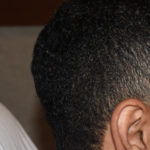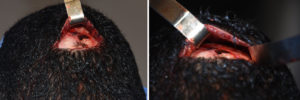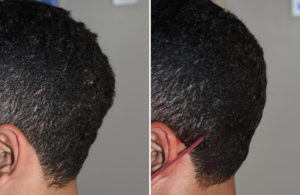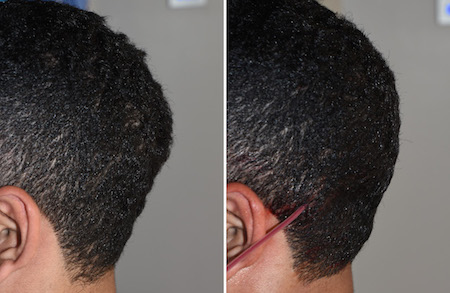Background: The shape of the back of the head is controlled by both internal and external factors. During development the push of the brain creates an internal expanding force. This may become more manifest if the overall shape of the head is more narrow. But external forces such as in utero and postnatal head positioning provide a potential external compression force. Between the two opposing forces the shape of the back of the head emerges.
Aesthetic protrusions on the back of head come in different varieties but they fall into two main categories; 1) expansion of the intracranial space resulting in a true occipital bone prominence and 2) overdevelopment of natural external bony landmarks. (e,g, occipital knob) The latter can always be burred down completely as they are composed of excessive solid bone and intracranial space violation will not occur. The former, however, is limited by the thickness of the bone and its outer cortical layer…which is the limit of safe bony reduction.
When reducing occipital bone reductions the preoperative decision resolves around whether enough of the protrusion can be reduced to make the procedure worthwhile. A preoperative lateral skull x-ray may be helpful in this regard but, in the end, the most important decision is based on experience and computer imaging. If I can demonstrate what I think is the minimum outcome (not the maximum) that is likely that helps the patient decide if the most assured result is worth the effort.



Occipital bony protrusions can be reduced… the only question is by how much and does that amount make it worthwhile for the patient. Discrete centralized occipital skull reductions have the best chance to achieve adequate aesthetic improvement.
Case Highlights:
1) Protrusions on the back of the skull are not uncommon and can have various centralized locations.
2) The central occipital protrusion is often seen in patients with more narrow head shapes.
3) The central occipital protrusion can be reduced down to the diploic space which is usually enough to create a visible aesthetic improvement.
Dr. Barry Eppley
Indianapolis, Indiana



